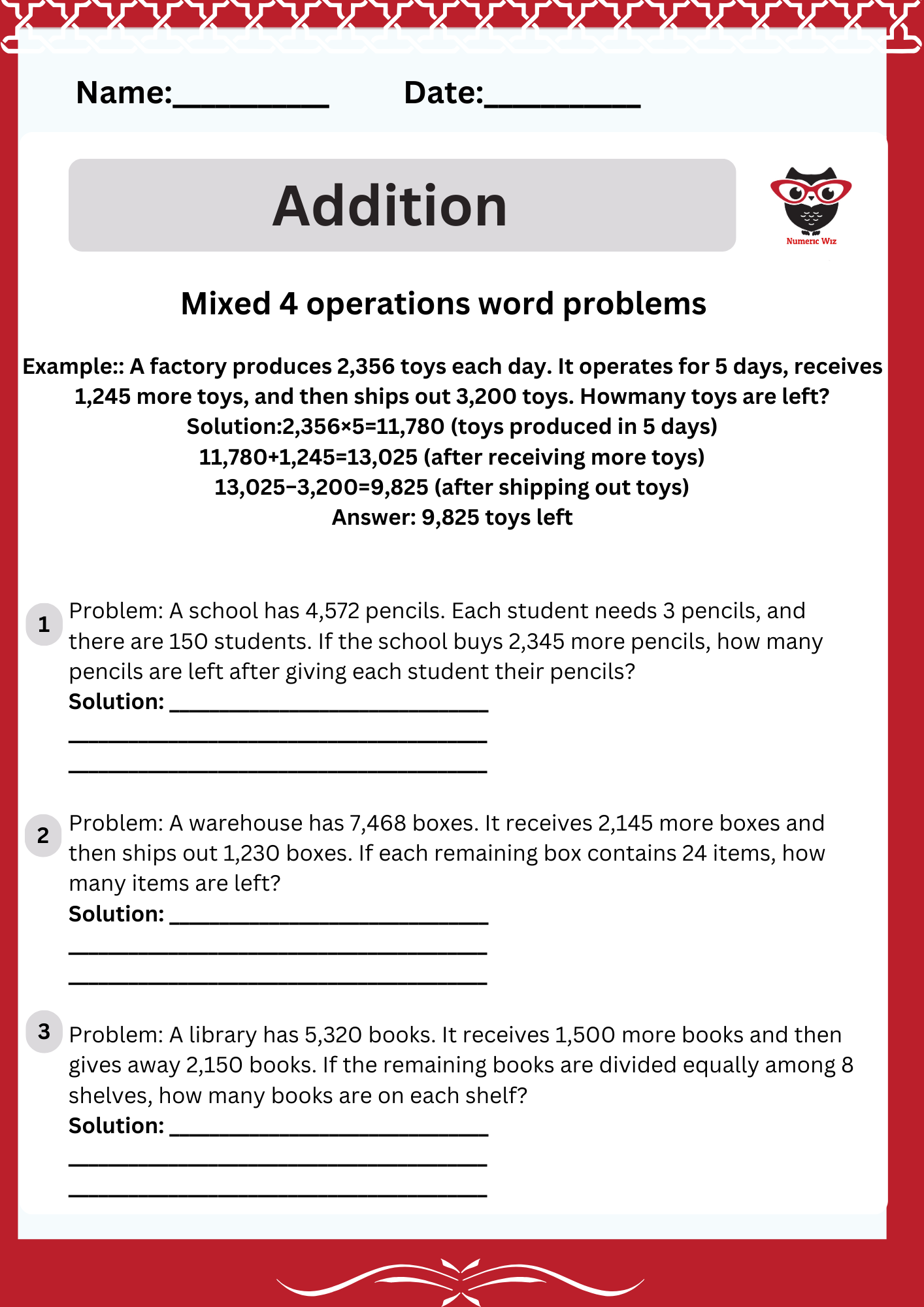
This involves using the addition arithmetic operation to solve real-life scenarios. Word problems require understanding the problem, identifying the quantities to be added, and then applying addition to find the total or combined value.
Liam bought 23 apples and 35 oranges. How many fruits did he buy in total?
Solution:
Final solution: Liam bought 58 fruits in total.
A library has 245 fiction books and 378 nonfiction books. How many books does the library have in total?
Solution:
Final solution: The library has 623 books in total.
A factory produced 76,581 toys in a year. Out of these, 52,473 toys were sold. How many toys remain in the factory?
Solution:
Final solution: 24,108 toys remain in the factory.
Mike rode 289 miles and John rode 324 miles in a bike race. In total, how many miles did they ride?
Solution:
Final solution: Together, they rode 613 miles.
A school raised $43,258 during a fundraiser in January and $21,634 in February. In total, how much money did the school raise?
Solution:
Final solution: The school raised a total of $64,892.
Why it matters:
Solving word problems with basic math operations helps students connect mathematics to real-life situations like shopping, budgeting, and time management. It develops critical thinking, problem-solving, and decision-making skills. Mastering this ensures students can analyze and solve practical problems effectively.
By practicing word problems with basic math operations, you can solve real-world problems quickly!
Let’s practice and evaluate your work by solving world problems with basic math operations.
For a limited time
